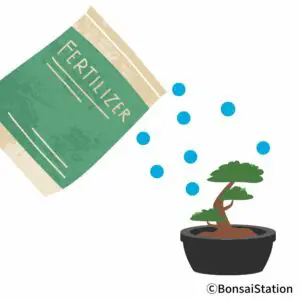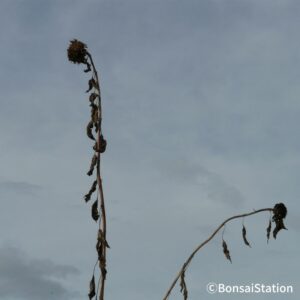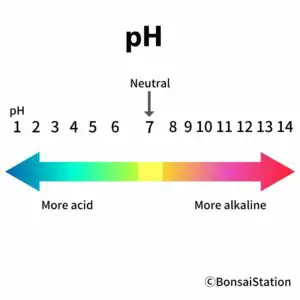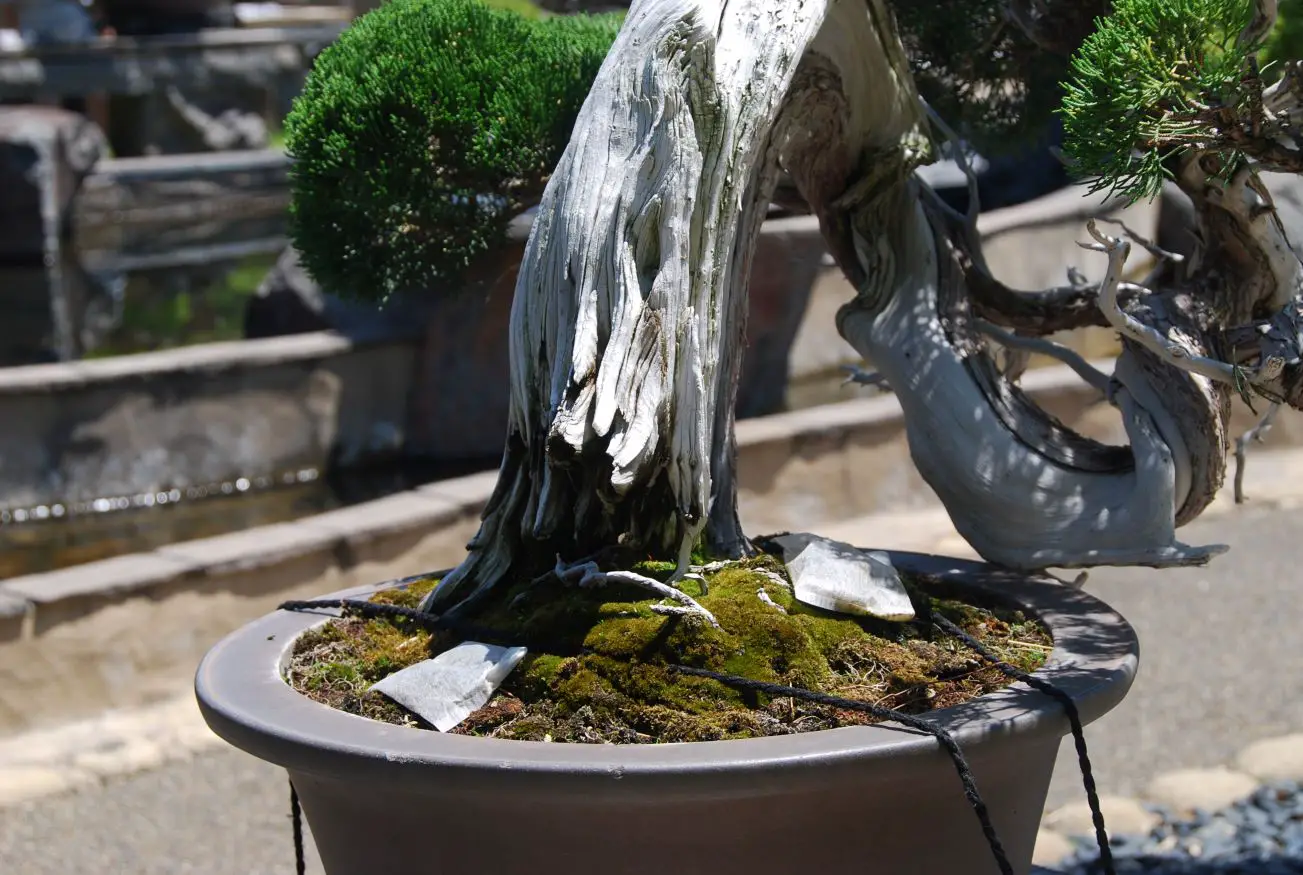Bonsai trees can be over- or under-fertilized. To keep track of fertilization-related issues, pay attention to changes in leaf/root color and growth. The key to fixing problems is adjusting the frequency of fertilizer application, either by increasing or decreasing it.
Can bonsai be over- or under-fertilized?
Bonsai trees are delicate plants that require special care to thrive because of their unique growing condition. And one important aspect of their care is fertilization, which provides the necessary nutrients for their healthy growth.
You might think you give what the fertilizer label says and that should be enough but it is not. Controlling the amount of fertilizers for bonsai trees is one of the challenges you may face with bonsai fertilization.
Causes of over-fertilization

Over-fertilization is one of the problems with bonsai fertilization. It occurs when too much fertilizer is applied, causing a concentration of soluble salts in the soil. These salts damage roots by slowing the flow of water into the roots, leading to yellowing leaves, slow growth, and stunted development.
Causes of overfertilization
Some of the factors that lead to overfertilization are as follows. Using excessive fertilizers is an obvious reason but overfertilization can be caused by nutrients not being drained enough.
- Too much slow-release fertilizer
- Too much liquid fertilizer added at one time
- Applying liquid fertilizer without enough watering
- Using slow-release fertilizer in combination with liquid fertilizer improperly
- Poor soil drainage
Causes of under-fertilization

Under-fertilization is another problem, which can manifest in slow/stunted growth or yellowing leaves.
Causes of under-fertilization
One of the distinctive causes of bonsai trees’ under-fertilization, which is not commonly seen in other houseplants, is frequent watering. Even if you apply enough fertilizer, any nutrients that are not immediately absorbed can be washed away with irrigation, leading to nutrient deficiency.
- Frequent watering
- Not enough fertilizer
- Wrong type of fertilizer (including wrong balance of nutrients)
How to monitor after fertilization
What to monitor for tree health

After you have fertilized your bonsai tree, it is important to monitor its health to ensure that the fertilization was successful and that no over- or under-fertilization has occurred. Here are some key indicators to look for:
- Leaf color
- Leaf growth
- Root color and growth
Leaf color
A healthy bonsai tree should have vibrant, green leaves. There are several color changes that you may notice:
- Yellowing
- Browning/bronzing leaf tips and margins
These color changes could indicate that the tree is either under- or over-fertilized. Note that yellowing leaves can be caused by overwatering as well.
Leaf growth
A healthy bonsai tree should have new leaf growth and leaves that are robust. Some of the leaf growth deformities include:
- Excessive growth
- Very slow or no growth
- Falling off
While excessive growth only comes from over-fertilization, slow/no growth and defoliation may be caused by either under- or over-fertilization.
Root color and growth
If the roots look white and are healthy, this is a good sign that the tree is getting an adequate level of nutrients. Some of the malformations of roots include:
- Blackened roots
- Root rot
- Slow/poor root growth
These are the signs of either under- or over-fertilization.
How to tell if the problem is from under- or over-fertilization
Many of the symptoms of leaf color change, leaf growth deformities and root color/growth malformation can be indicative of both over-fertilization and under-fertilization. It may be difficult to differentiate but there are other factors that can help determine which it is.
Leaf yellowing
If the yellowing appears first on the older leaves and then on younger ones, it is more likely caused by under-fertilization.
On the other hand, if the yellowing is present on all the leaves including the new growth, and may be more significant in lower leaves, it is more likely a case of over-fertilization.
Blackened roots
Blackened roots and root rot manifest much quicker in over-fertilization than in under-fertilization. Nutrient deficiencies may result in root rot but it usually takes months before you notice it.
Soil condition
You can also check the soil condition. If the soil is packed and consistently wet, it could indicate that the nutrients are not leached properly and are thus over-fertilized.
By monitoring these key indicators, you can get a good sense of whether your bonsai tree is healthy and thriving after fertilization.
How to adjust fertilization
If you have noticed any issues with your bonsai tree after fertilization, it may be necessary to adjust the amount of fertilizer that you are giving it. Here are some steps you can take.
When over-fertilized
Reduce fertilizer application
If you have noticed that the tree is getting too much fertilizer, reduce the amount that you are giving it.
You can do this by reducing the frequency or concentration of the fertilizer, especially when you are using liquid or small granular fertilizer. These fertilizers release nutrients quickly and can lead to a high concentration of soluble salts.
When you apply liquid fertilizer, make sure to make it twice the labeled dilution: if the label says the most diluted solution is x1000, make it x2000. If you placed fertilizer pellets on the soil, you can also remove some or all of them, especially when the soil contains organic compost.
Remember that it is always better for bonsai trees to be slightly under-fertilized than over-fertilized.
When under-fertilized
Increase fertilizer application
If you have noticed that the tree is not getting enough fertilizer, increase the amount that you are giving it. You can do this by increasing the frequency of the fertilizer application. Avoid increasing the concentration of fertilizer which may cause over-fertilization instead.
Check soil pH

pH scale
You may also need to adjust the pH level of the soil because its pH level influences nutrient uptake by bonsai trees.
Many nutrients change form in reactions to other chemicals in the soil, which are largely controlled by soil pH. You can purchase a pH testing kit from a garden center or online and use it to determine the pH level of the soil.
Nutrient deficiencies are usually induced by high soil pH (above 7.0). To reduce soil pH, you can add aluminum sulfate or elemental sulfur to the soil. For the majority of bonsai tree species, soils with a pH between 5.5 to 6.5 generally provide the best-growing conditions.
You can also put sphagnum moss (peat moss) on top of the soil to help reduce soil pH for a slower fix. Sphagnum moss actively acidifies the habitat they live within (reduces soil pH) but is very slow acting and may not be effective in causing large soil pH changes.
How to fix problems with over- or under-fertilization
If your bonsai tree has suffered from over- or under-fertilization, it is necessary to take steps to correct the problem. Here are some steps you can take:
When over-fertilized

Stop applying fertilizer
If you have noticed that the tree is getting too much fertilizer, stop fertilizing altogether until the problem is fixed. Remove the pellets if they are visible on the soil.
Flush soil
Excess fertilizers have to be flushed out of the soil. To do this, water the soil thoroughly until it pours out the bottom of the pot. Repeat this leaching 2 to 3 hours later and the next day until excess fertilizer is removed from the soil.
Re-pot
You can also consider repotting your tree with fresh soil. This will allow the tree to start fresh.
One thing to consider is that repotting is as stressful to bonsai trees as over-fertilizing. If your tree is heavily damaged and already weakened, repotting may not be a good solution. It may be better to just flush excess fertilizer out with water and wait to see if your tree recovers.
When under-fertilized

Check the label (and change)
Most fertilizers that are commonly used in horticulture contain the three basic plant nutrients: nitrogen, phosphorus, and potassium, as well as micronutrients that are necessary for plant growth.
The basic formula for bonsai fertilizer that is common for all species is an NPK ratio of 2-1-1 or 4-2-1, emphasizing the nitrogen ratio for leaf growth. Check the label and switch to other fertilizers if yours does not match it.
If you are using (homemade) organic fertilizer and you do not know the balance of nutrients, replace it with one that has balanced nutrients for plant growth. The current one probably lacks some of the nutrients necessary for trees’ growth.
Increase fertilizer application
Increasing the frequency of the fertilizer application is another (obvious) solution.
After making any adjustments to your fertilizer regime, it is important to closely monitor your bonsai tree to ensure that it is responding well to the changes. If you notice any further issues, make additional adjustments.
By following these steps, you can help your bonsai tree recover from over- or under-fertilization and return to its healthy state.



